Contents
- Index
- Previous
- Next


I m a g i n g P r o c e d u r e s
Firearm Images may be generated with a digital camera, copied from the Internet or scanned from photos. These pictures may then be saved as image files on your computer.
Before the images are copied into the Arms Record Images database, they must first be correctly sized, proportioned and then saved in a JPEG format. This may be accomplished through the use of an imaging program such as Windows Paint. Commercially available software such as Paint Shop Pro, Photo Shop, etc. may also be used. The images contained in the personal software installation used for the screen snaps in this help file were generated with XNView software(http://www.xnview.com) simply because it worked better for this application than any software programs previously used.
The following steps will be outlined for using the Windows Paint Imaging software. The same general procedures may also be used with any commercially available software installed on your computer.
If a digital camera is used to generate images of the firearm or accessories, install and use the software provided with the camera to save the image files to a folder or directory such as My Documents\My Pictures on your computer.
If an image is located on an Internet browser, right-click the image and save the image to the image folder on your computer.
If the image is scanned from a photograph, configure the scanner to save the scanned image to the image folder on your computer.
Go to Start - Programs - Accessories, select the menu item titled Paint and the following program should open.
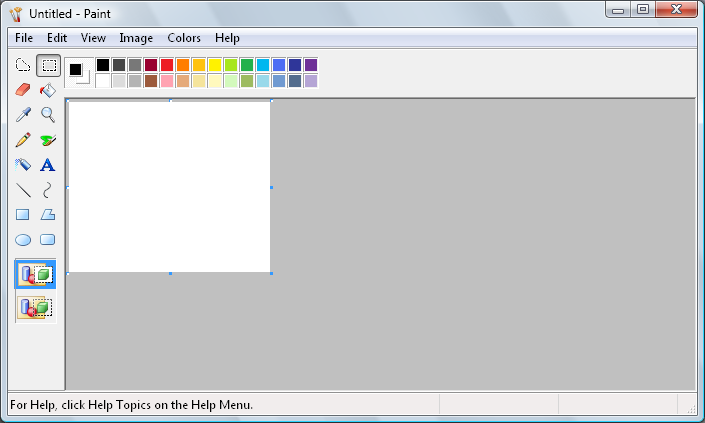
Click File and then click Open. A selection window should open to the My Documents\My Pictures directory where you saved your images from the camera, Internet browser or scanner. If the Paint software does not open to the correct directory, you may navigate to the proper folder by clicking the down-arrow in the Look in: field at the top of the window then follow the directory tree on your computer to the correct folder.
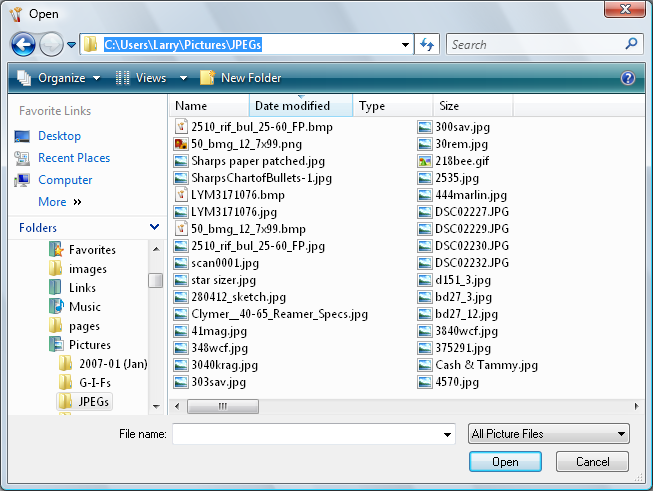
Locate, and open the firearm image file. It will most likely be quite large in size and not correctly proportioned to fit the image frames of the Firearm Records software. The frames on the Image Control page are able to display the image either in the original size or, the image may be sized to fit the frame. If the image proportions are the same as the frame, there will be no distortion of the image when fitted to the frame. The software is compiled with 68 pixels to the inch.
The Image Frame sizes, in both pixel and inch sizes are as follows:
The Image Control Firearm Long Image is: 187 x 748 pixels or 2.75 x 11.00 inches. = 1x4 units
The Image Control Firearm Short Image is: 510 x 680 pixels or 7.50 x 10.00 inches. = 3x4 units
The Accessory Information Images are: 189 x 252 pixels or 2.25 x 3.00 inches. = 3x4 units
The large image frames display the same image file as do the smaller frames. The smaller frames display the large sized images clearly but the large frames do not display small sized images well. The best results are obtained by loading images sized to fit the large frames into the database.
After the image file is opened in the Paint program, click the Image menu and select Attributes. The image may then be cropped to the correct PROPORTIONS using either pixel or inch units. The proportions are as follows:
1 unit high x 4 units wide fit the long firearm images.
3 units high by 4 units wide fit all other images.
(Most digital cameras produce images 3 units high and 4 units in width)
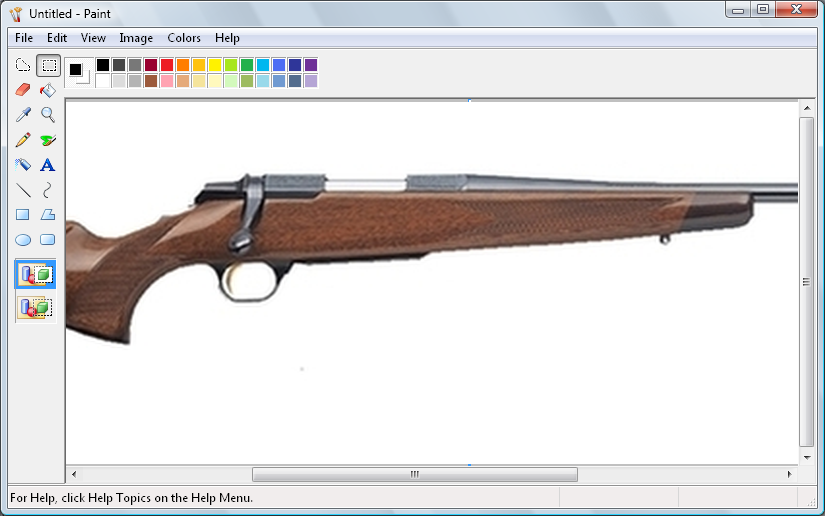
The image shown was copied from the Browning Arms web page that describes the Browning A-Bolt Medallion. It was a JPG file with the dimensions shown in the Image-Attributes window

The proportions of this image were 1550 x 362, so then divide 1550 by 362 and this indicates that the proportions of this image are 1 unit x 4.28 units.
The proportions required by the Large, Long Image Frame are 1 unit x 4 units, so we divide 1550 by 4 which reveals that an image height of 388 pixels is required.
The height of the image is presently 362 pixels and needs to be increased to 338 pixels by adding 13 pixels to the top and 13 pixels to the bottom.
Change the number in the Height window to 375 and click OK. This will add 13 pixels to the bottom of the image.
Next, select Image-Flip/Rotate-Flip Vertical-OK. The Image Attributes may now be used to add 13 pixels to the bottom of the inverted image by entering 388 in the Height window and clicking OK.
Using Image, Flip/Rotate, vertically flip the image back to the correct orientation.
The image is now correctly proportioned and may be used in either the Large Long Image or Small Long Image frames.
The Large, Long Image Frame is 11 inches long and the image being considered is 1550 divided by 68 = 22.79 inches long.
Although the image would be correctly displayed in either the large or small frame, un-necessarily large image files will soon bloat the database files. For optimum computer performance, this practice should be avoided.
After an image is determined to have the correct proportions, it may be sized to fit the various frames in the program by again clicking the Image menu and selecting Stretch / Skew.
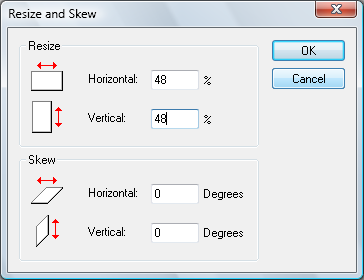
The image in consideration now has an adjusted pixel size of 1550 x 388 pixels and should be re-sized to fit the Large, Long Image frame which is dimensioned to 187 pixels x 748 pixels. Therefore, 187 divided by 388 returns 0.48. Multiplying 0.48 by 100 returns the percentage value of 48%.
Enter 48 into both the Horizontal and Vertical windows of the Stretch / Skew module and click O.K. The image will then be correctly sized to fit the Large, Long Image frame and will also display well in the Small, Long Image frame.
Use the same proportion and sizing procedures for the various frame sizes.
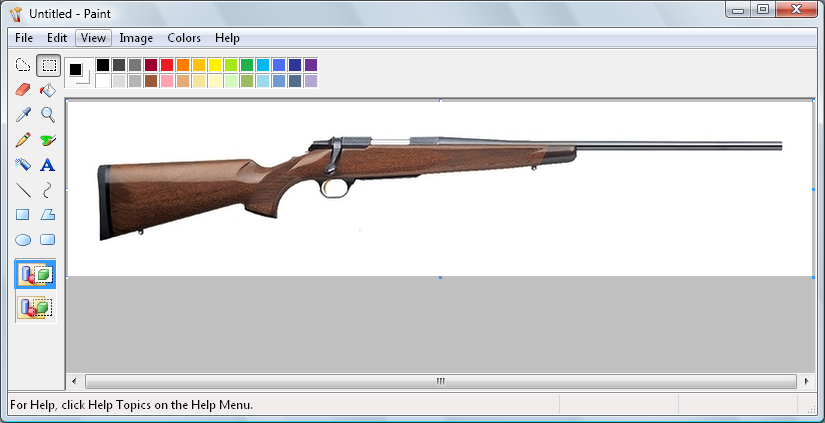
The Firearm Records installation process creates two folders where Firearm and Accessory images may be stored until such time as they are to be placed into the Firearm Record database. These folders are located in (C:\Program files\TMT\ArmsRec\ArmsPic) and (C:\Program files\TMT\ArmsRec\AccyPic).
In order to be stored in the Firearm Record database, the image must be in the form of a JPEG file. The original image will most likely be a JPG file if generated by a digital camera or scanner, or if copied from the computer's Internet browser, the file may be either a JPG or GIF type.
To convert the image to a JPEG file, click the File menu and select Save as.
A Navigation window will open enabling navigation to the ArmsPic or AccyPic folders described in the preceding paragraph.
Type a descriptive name for the image in the File window. Next, in the "Save as type" window, select "Jpeg files ("*.jpg")
". Click "SAVE" and the file will be saved in the correct configuration and will then be stored where it may be easily located for entry into the Firearm Record database.
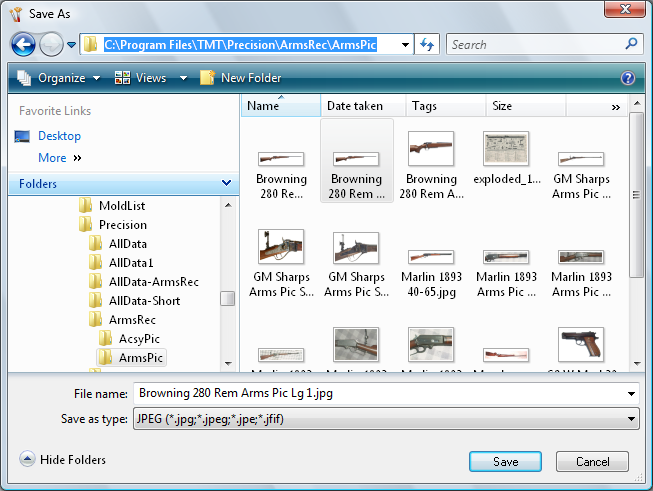
Copyright © 2016 TMT Enterprises. All rights reserved.








